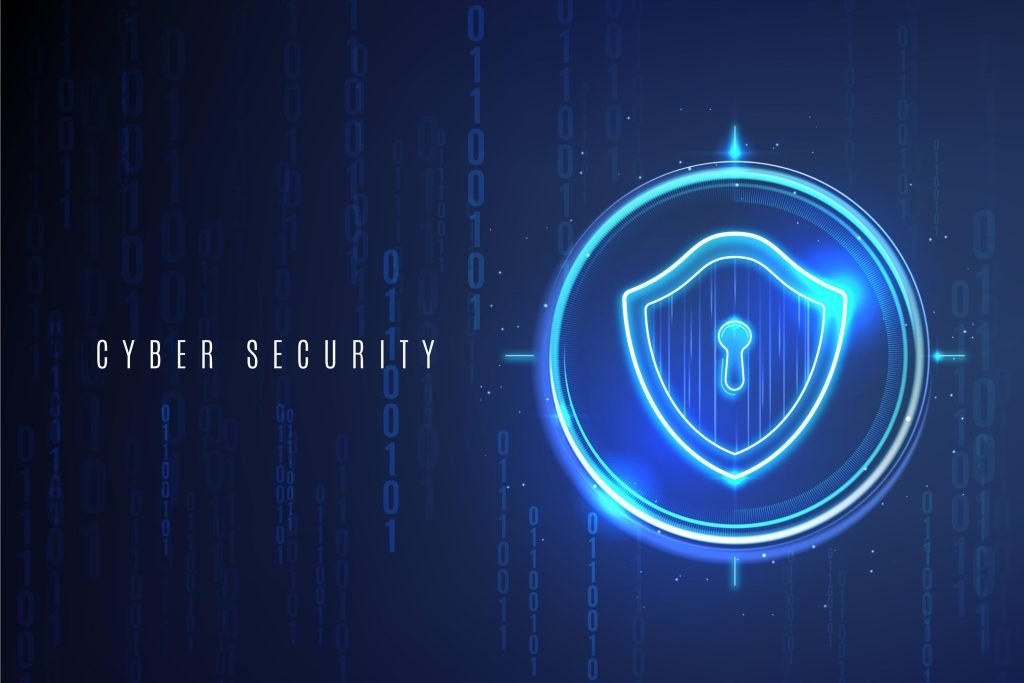In today’s interconnected world, Cybersecurity Threats are more pervasive than ever. Businesses of all sizes face an increasing number of cyberattacks, ranging from phishing scams and ransomware to more sophisticated threats like social engineering and insider attacks.
With the frequency and complexity of these threats on the rise, it’s imperative that organisations not only invest in robust cybersecurity technologies but also prioritise Cyber security training for employees.

Why Cybersecurity Training for Employees is Crucial
Technology alone cannot fully protect an organisation from cyber threats. Employees play a critical role in safeguarding sensitive information and maintaining the overall security posture of the organization. Unfortunately, human error remains one of the leading causes of security breaches. According to a report by the Ponemon Institute, 27% of data breaches in 2020 were caused by human error, highlighting the importance of training employees to recognize and prevent cybersecurity threats.
Cyber security awareness training for employees empowers workers with the knowledge and skills they need to identify potential threats, respond appropriately to security incidents, and adhere to best practices for maintaining security.
This cyber security training is not just for IT professionals; it is essential for all employees, regardless of their role within the organisation. When employees are well-informed and vigilant, the risk of a successful cyberattack is significantly reduced.
Key Components of a Cybersecurity Training Program
To be effective, a cybersecurity training program must be comprehensive, covering a wide range of topics relevant to the specific risks an organisation faces.
Here are the key components that should be included in any effective training program:
Understanding Cybersecurity Threats
The first step in effective cybersecurity training is educating employees about the various types of cyber threats they may encounter.
This includes:
- Phishing Attacks: Employees should learn to recognise phishing emails and other types of social engineering scams. Training should include examples of common phishing tactics, such as fraudulent links, spoofed email addresses, and urgent requests for sensitive information.
- Malware and Ransomware: Employees need to understand how malware and ransomware can be inadvertently downloaded onto their devices and the severe consequences of such infections. Training should cover how to avoid suspicious downloads, links, and attachments.
- Social Engineering: This involves manipulating people into divulging confidential information. Employees should be trained to recognise common social engineering tactics, such as pretexting, baiting, and tailgating.
- Insider Threats: Training should address the risks posed by insider threats, including both malicious insiders and well-meaning employees who may inadvertently compromise security.
Recognising and Reporting Security Incidents
A critical aspect of cybersecurity training is teaching employees how to recognise and respond to security incidents.
This includes:
- Recognising Security Breaches: Employees should be aware of the signs of a potential security breach, such as unexpected system slowdowns, unfamiliar files or programs, or unauthorised access attempts.
- Incident Response Procedures: Training should include clear guidelines on what to do if a security incident is suspected. This may involve immediately disconnecting the affected device from the network, notifying the IT department, and following the organisation’s incident response plan.
- Importance of Prompt Reporting: Employees should understand the importance of promptly reporting any suspicious activity, even if they are unsure whether it constitutes a security threat. Early detection and response are crucial for mitigating the impact of a cyberattack.
Password Management Best Practices
Weak or compromised passwords are a common entry point for cybercriminals. Employees should be trained on the importance of creating strong, unique passwords and using password management tools.
Key points include:
- Creating Strong Passwords: Employees should use complex passwords that include a mix of letters, numbers, and special characters. Passwords should also be of sufficient length, generally at least 12 characters.
- Avoiding Password Reuse: Reusing passwords across multiple sites increases the risk of a breach. Employees should be encouraged to use a password manager to keep track of unique passwords.
- Regular Password Updates: Employees should be trained to update their passwords regularly and whenever there is a suspicion that a password may have been compromised.
- Two-Factor Authentication (2FA): Whenever possible, employees should use 2FA to add an extra layer of security beyond just a password.

Safe Internet and Email Practices
Employees should be trained to follow safe practices when browsing the internet and using email, which are common vectors for cyberattacks:
- Recognising Suspicious Emails: Employees should be cautious of unsolicited emails, especially those that contain attachments or links. Training should focus on identifying red flags, such as unfamiliar sender addresses, poor grammar, or messages that create a sense of urgency.
- Avoiding Malicious Websites: Employees should be taught to verify the legitimacy of websites before entering sensitive information. This includes checking for secure HTTPS connections and being wary of sites with unusual domain names.
- Handling Sensitive Information: Employees must understand the importance of encrypting sensitive data before sending it via email or uploading it to cloud services. They should also be trained on the organisation’s policies for handling and sharing sensitive information.
Data Protection and Privacy Awareness
Employees must be aware of the importance of protecting both company data and the personal data of clients and customers.
Key training topics include:
- Data Classification: Employees should be trained to classify data according to its sensitivity and apply appropriate security measures based on the classification. For example, confidential data may require encryption and restricted access.
- Data Handling Practices: Training should cover the proper handling, storage, and disposal of sensitive data. This includes securely deleting files that are no longer needed and using encrypted storage for sensitive information.
- Privacy Regulations: Employees should be aware of relevant privacy regulations, such as GDPR or HIPAA, and their role in ensuring compliance. This includes understanding the rights of individuals regarding their personal data and the obligations of the organization to protect that data.
Secure Remote Work Practices
With the rise of remote work, it is essential to train employees on the unique cybersecurity challenges associated with working from home or other remote locations:
- Securing Home Networks: Employees should ensure that their home Wi-Fi networks are secure, using strong passwords and encryption. They should also be encouraged to change default router passwords and regularly update firmware.
- Using VPNs: Employees should use a virtual private network (VPN) to secure their internet connections when accessing company resources remotely. VPNs help protect against man-in-the-middle attacks and other threats.
- Remote Device Security: Training should emphasise the importance of securing all devices used for work, including laptops, smartphones, and tablets. This includes using antivirus software, keeping operating systems and applications up to date, and enabling remote wipe capabilities in case a device is lost or stolen.
Regular Cybersecurity Training and Updates
Cybersecurity training should not be a one-time event. Given the constantly evolving nature of cyber threats, it is essential to provide ongoing training and updates:
- Regular Training Sessions: Schedule regular training sessions to reinforce key concepts and introduce new cybersecurity practices. These sessions can be conducted in-person, online, or through interactive e-learning modules.
- Phishing Simulations: Conduct periodic phishing simulations to test employees’ ability to recognize and respond to phishing attempts. These simulations can help identify areas where additional training is needed.
- Staying Informed: Encourage employees to stay informed about the latest cybersecurity threats and trends. This can be facilitated by sharing relevant news articles, reports, and best practice guidelines.
Fostering a Security-Conscious Culture
Finally, an effective cybersecurity training program should aim to foster a security-conscious culture throughout the organisation:
- Lead by Example: Leadership should model good cybersecurity practices, demonstrating their commitment to security and setting an example for the rest of the organisation.
- Encourage Open Communication: Employees should feel comfortable reporting potential security issues without fear of retribution. Encourage a culture of openness and support when it comes to cybersecurity.
- Recognise and Reward Vigilance: Consider recognising and rewarding employees who demonstrate a strong commitment to cybersecurity. This could be through formal recognition programs, incentives, or other forms of acknowledgment.
Cybersecurity training for employees is a critical component of any organisation’s overall security strategy. By educating employees about the various cyber threats they may face, providing them with the tools and knowledge they need to protect themselves and the organisation, and fostering a culture of security awareness, businesses can significantly reduce the risk of cyberattacks and data breaches.
Investing in regular, Comprehensive Cybersecurity Training not only helps protect your organisation but also empowers employees to take an active role in safeguarding the company’s digital assets. As cyber threats continue to evolve, so too must the strategies and practices used to defend against them, making ongoing training and education an essential part of maintaining a secure business environment.
Need help securing your business against Cyber Threats?
Contact Creative Networks today to learn more about our Comprehensive Cybersecurity Solutions. Our team of experts is dedicated to protecting your business, ensuring your systems are secure, and safeguarding your data against evolving cyber threats. Let us help you build a resilient security posture that keeps your organization safe.




